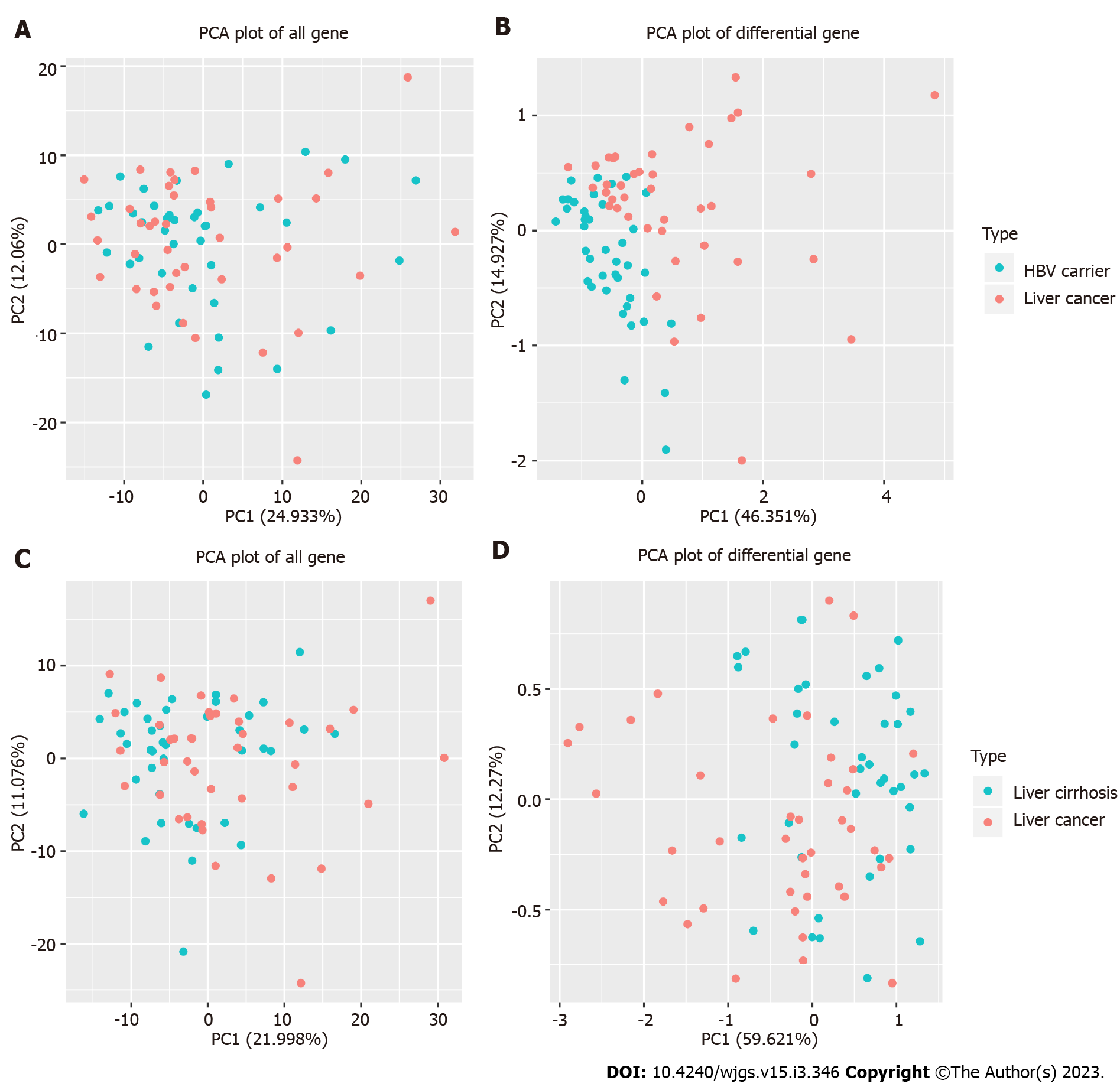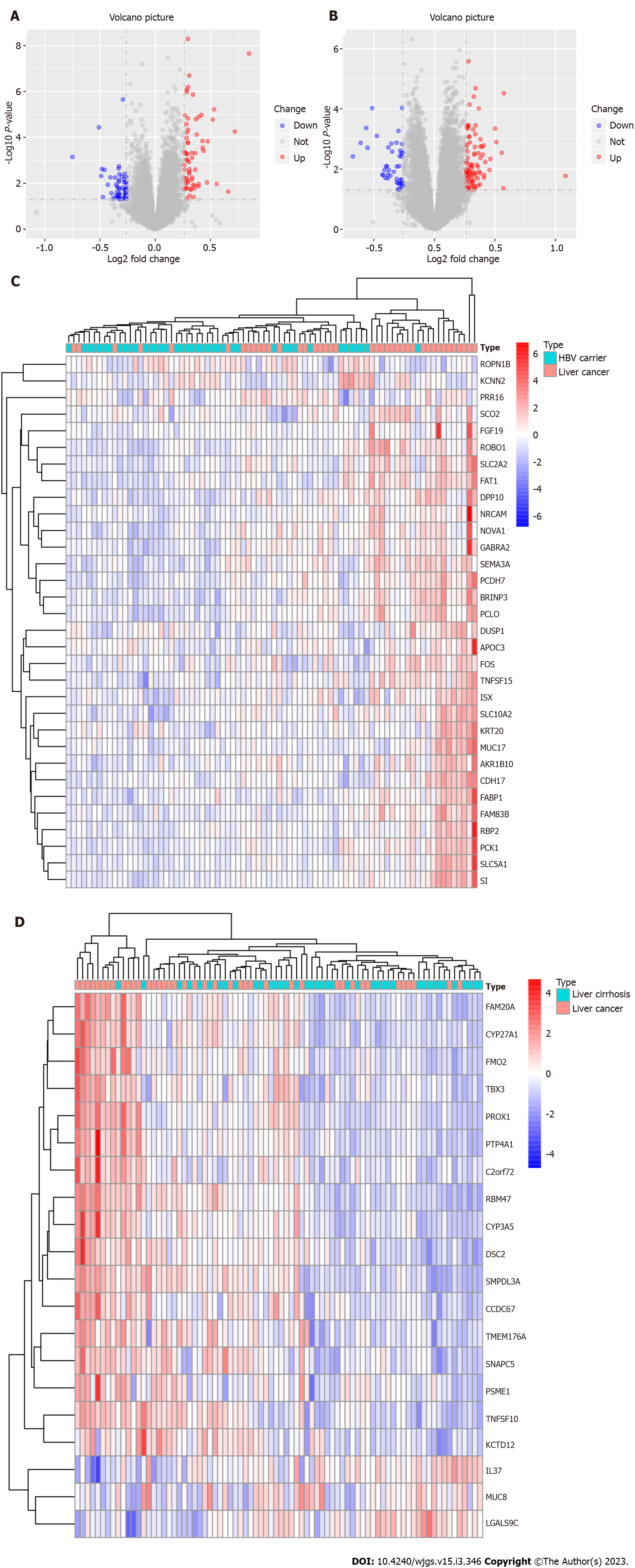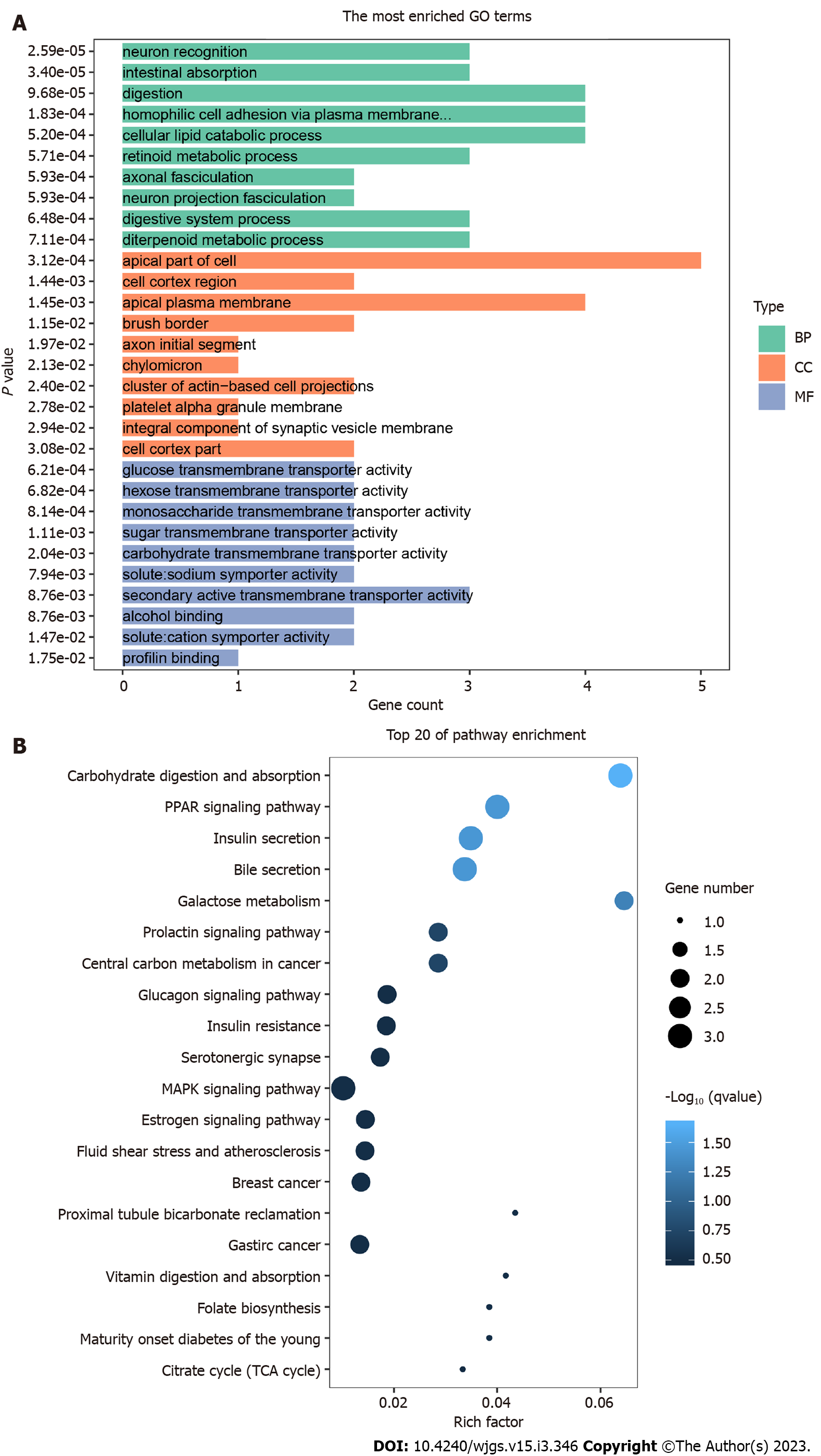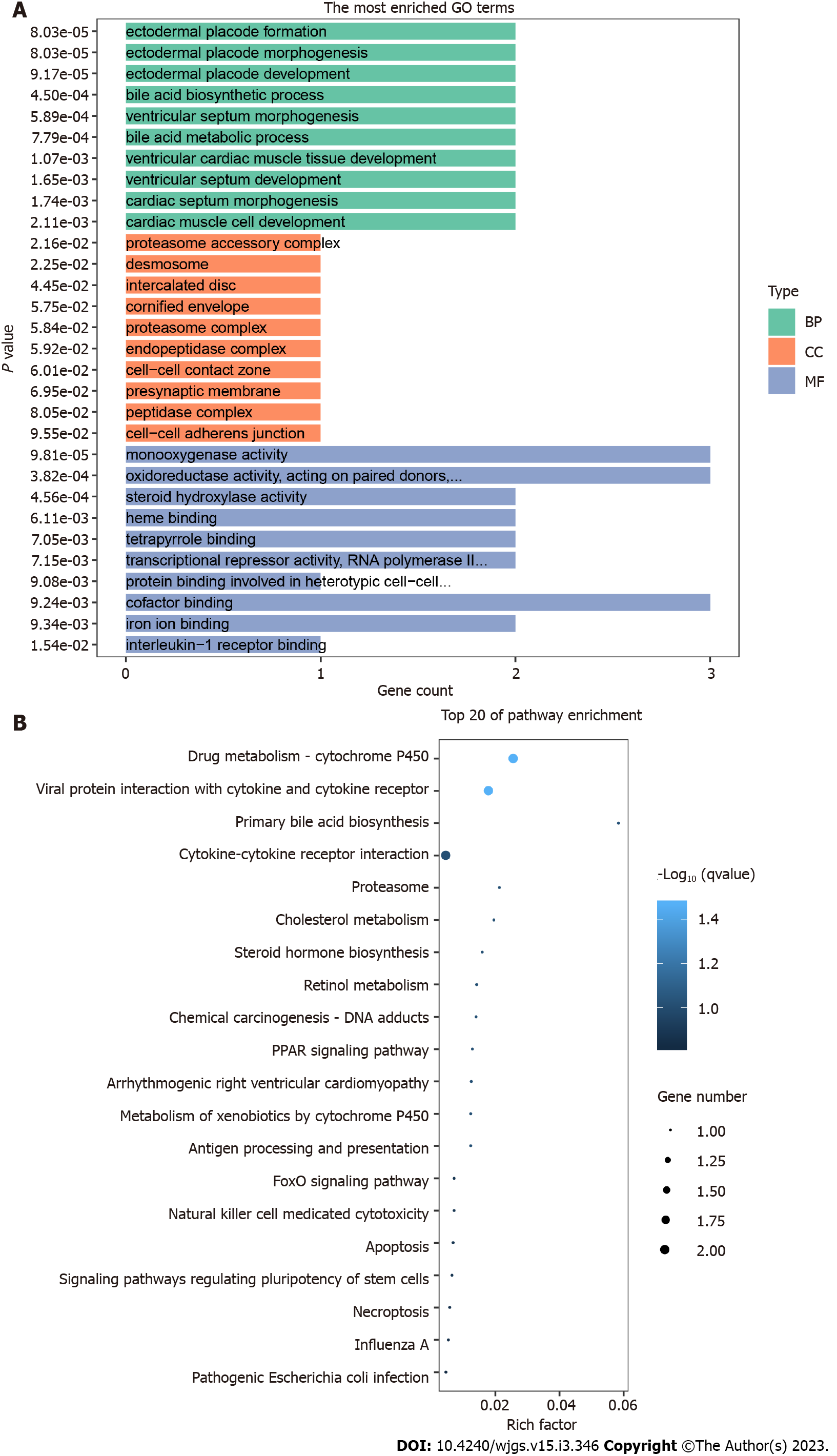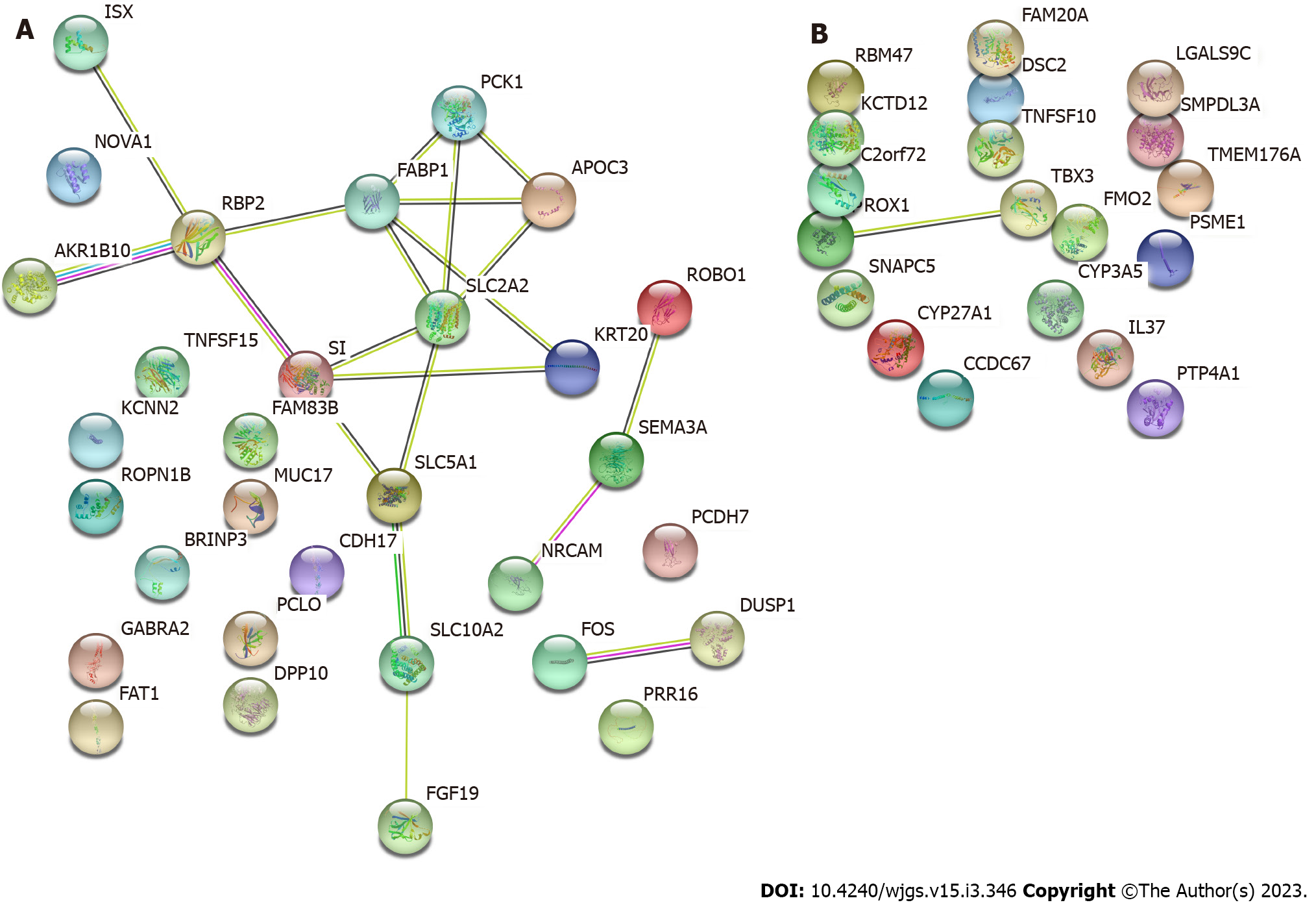Copyright
©The Author(s) 2023.
World J Gastrointest Surg. Mar 27, 2023; 15(3): 346-361
Published online Mar 27, 2023. doi: 10.4240/wjgs.v15.i3.346
Published online Mar 27, 2023. doi: 10.4240/wjgs.v15.i3.346
Figure 1 Principal component analysis after 5-hydroxymethylcytosine sequencing of hepatitis B surface antigen-positive carriers, patients with liver cirrhosis, and patients with liver cancer (40 cases per group).
A: Principal component analysis (PCA) plot of all genes in hepatitis B surface antigen (HBsAg)-positive carriers and patients with liver cancer; B: PCA plot of differential genes between HBsAg-positive carriers and patients with liver cancer; C: PCA plot of all genes in patients with liver cirrhosis and those with liver cancer; D: PCA plot of differential genes between patients with liver cirrhosis and those with liver cancer. PCA: Principal component analysis; HBV: Hepatitis B virus.
Figure 2 Analysis of 5-hydroxymethylcytosine differences after sequencing.
A, B: The gene volcano maps of hepatitis B surface antigen (HBsAg)-positive carriers and patients with liver cancer (A) and of patients with liver cirrhosis and those with liver cancer (B). The blue point indicates that the change of gene hydroxymethylation log2 fold is less than -0.26, and the red point indicates that the change of gene hydroxymethylation log2 fold is more than 0.26; C, D: Gene hot maps for HBsAg-positive carriers and patients with liver cancer (C) and for patients with liver cirrhosis and those with liver cancer (D). The blue block colors indicate a lower level of gene hydroxymethylation, and the red block colors indicate a higher level of gene hydroxymethylation. HBV: Hepatitis B virus.
Figure 3 Results of 5-hydroxymethylcytosine sequencing differential gene enrichment analysis between hepatitis B surface antigen carriers and patients with liver cancer.
A: Gene ontology enrichment analysis of 5-hydroxymethylcytosine (5hmC) sequencing differentially expressed genes (DEGs); B: Kyoto Encyclopedia of Genes and Genomes enrichment analysis of 5hmC sequencing DEGs. GO: Gene ontology; CC: Cellular component; BP: Biological process; MF: Molecular function.
Figure 4 Enrichment analysis results of 5-hydroxymethylcytosine sequencing differential genes between patients with liver cirrhosis and those with liver cancer.
A: Gene ontology enrichment analysis of 5-hydroxymethylcytosine (5hmC) sequencing differentially expressed genes (DEGs); B: Kyoto Encyclopedia of Genes and Genomes enrichment analysis of 5hmC sequencing DEGs. GO: Gene ontology; CC: Cellular component; BP: Biological process; MF: Molecular function.
Figure 5 Protein-protein interaction network analysis of differentially expressed genes.
A: Protein-protein interaction (PPI) network of differentially expressed genes (DEGs) in hepatitis B surface antigen carriers and patients with liver cancer; B: PPI network of DEGs in patients with liver cirrhosis and those with liver cancer.
- Citation: Li YC, Hu WY, Li CH, Zhang LL, Xu XW, Li J, Luo HX. Differential expression and significance of 5-hydroxymethylcytosine modification in hepatitis B virus carriers and patients with liver cirrhosis and liver cancer. World J Gastrointest Surg 2023; 15(3): 346-361
- URL: https://www.wjgnet.com/1948-9366/full/v15/i3/346.htm
- DOI: https://dx.doi.org/10.4240/wjgs.v15.i3.346









